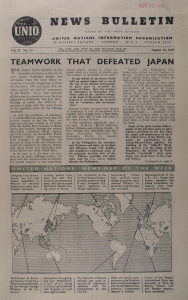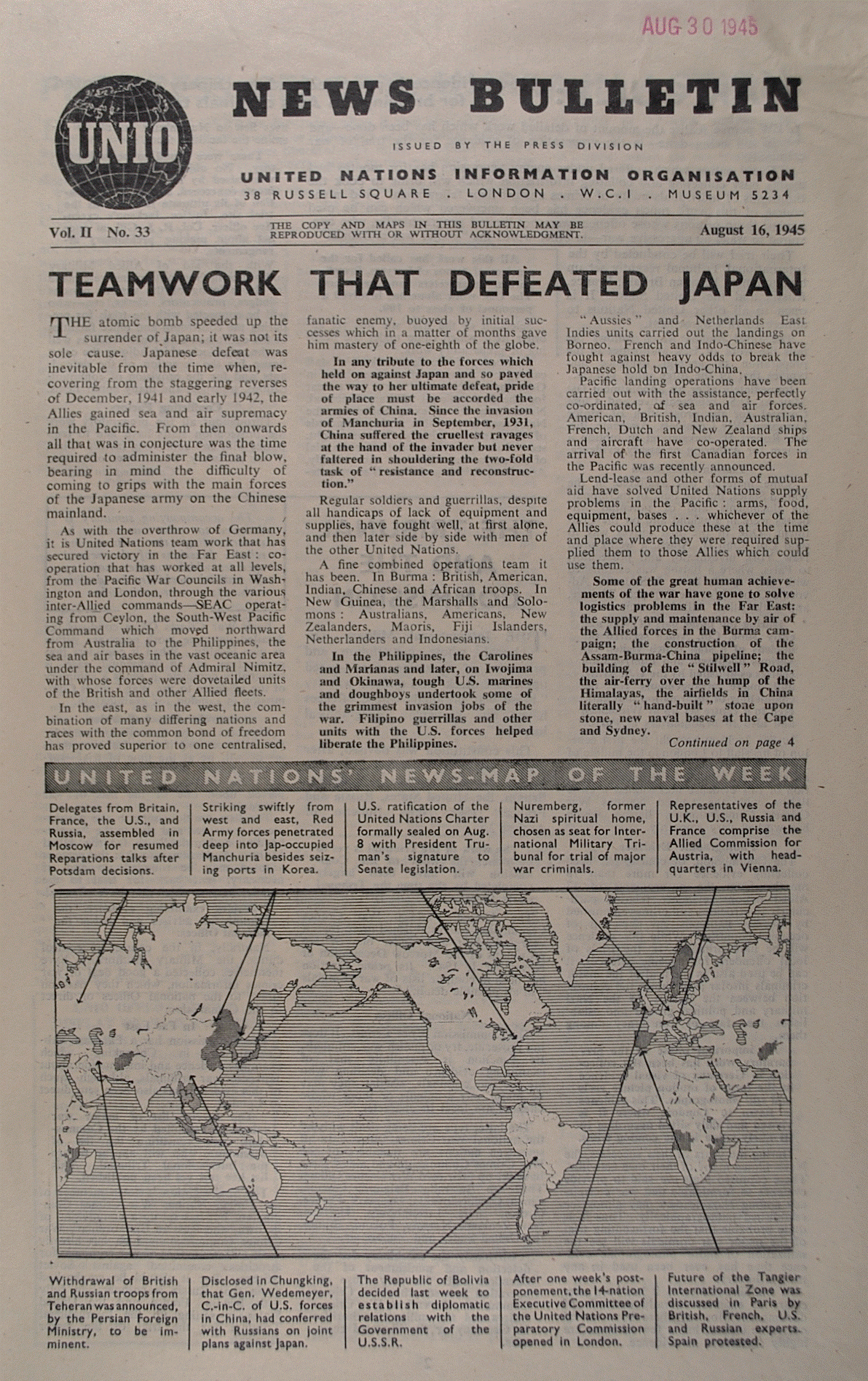 History tends to remember the defeat of Japan as a purely American victory. It is unlike the allied victory over Hitler in Europe that was the result of the combined efforts of the United States, Britain, the USSR, the Canadians, Free French and countless others. History remembers victory in Europe as a triumph of the Allies.
History tends to remember the defeat of Japan as a purely American victory. It is unlike the allied victory over Hitler in Europe that was the result of the combined efforts of the United States, Britain, the USSR, the Canadians, Free French and countless others. History remembers victory in Europe as a triumph of the Allies.
The Pacific War is different. In the minds of most Americans, the Pacific War was a one-on-one fight with Imperial Japan, and it was America alone that prevailed. It was American forces that turned the tide against the Japanese at Midway, Americans who carried out the costly strategy of Island-hopping, it was Americans who took the fight to mainland Japan and it was America that broke the back of the Empire by bombing Hiroshima and Nagasaki. Indeed, the American victory in the Pacific, and in particular, certain battles such as Pearl Harbor, Midway and Iwo Jima have become important to the American identity and continue to attract great interest nearly seven decades later.
The United States did achieve a great victory over Imperial Japan, and that accomplishment should be recognized; however, it did not achieve that victory alone. The United States did not have large and powerful allies in the Pacific War as it did in Europe, however, despite this, its Pacific allies played an integral part in achieving victory over Japan.
Australia offered U.S. forces strategic depth within the Pacific theater. Throughout the Pacific war, Australia acted as a sanctuary outside of Japanese reach where battle-weary troops could be rotated away from the front and given the chance to recuperate. Australia also provided invaluable logistical support as U.S. forces began its counter-offensive to retake territory occupied by the Japanese.
The Philippines. a U.S. possession at the time of the war, housed a large contingent of combined U.S. and Filipino forces, including the U.S. Asiatic fleet and was the headquarters of the US Army Far Eastern Command. Thousands of Filipino and American soldiers fought and died alongside one another in a heroic yet doomed attempt to stem the initial Japanese onslaught; many later suffered untold horrors on the infamous ‘Bataan Death March,’ or in Japanese prison camps. Those that escaped formed a guerrilla network to resist the Japanese occupation. Aided by many local villages, Filipino and American soldiers were able to continue to fight the Japanese, and importantly, provide intelligence that proved invaluable to the liberation of the Philippines in 1944, itself a hugely important step towards bringing about the Japanese defeat.
China, one of the original ‘big four’ signatories of the 1942 Declaration by United Nations, was another vital ally in the struggle to liberate Asia and the Pacific. Japan seized on the internal turmoil caused by years of civil war between the Communists and the Kuomintang by invading and conquering Manchuria in 1931. Japanese forces pressed onward into China following the orchestrated attack at the Marco Polo Bridge. The Japanese quickly captured Peking, Shanghai and Nanjing, at which time hundreds of thousands of Chinese civilians were killed in some of the worst atrocities of the war. By the time Europe became engulfed in war, the Chinese had been fighting against the Japanese occupation for nearly a decade, in what many would later term, “the forgotten war.” Estimates of Chinese casualties during the war range from 10 to 20 million as the result of enemy action or from widespread famine and illness resulting from the war.
The tenacity exhibited by Chinese forces to continue fighting despite suffering such horrendous losses stretched the Japanese war machine to its breaking point, as the Japanese were required to direct increasingly scarce resources to the Chinese front, thereby hastening their own defeat.
Finally, in what was to prove the war’s final act, the bombing of Hiroshima and Nagasaki, an important detail is often left out in many historical accounts. On August 8th 1945, two days after the Enola Gay dropped the first atomic bomb on Hiroshima, the USSR entered the war against Japan and advanced troops into Manchuria early in the morning of August 9th. Shortly after, the second bomb fell on Nagasaki. Emperor Hirohito announced Japan would surrender 6 days later on August 15th.
In his August 15th radio address, Emperor Hirohito cited the use of a “new and most cruel bomb,” as the reason for Japan’s capitulation. However it is nearly impossible to conclude that a stark appraisal of the power now arrayed against it upon the Soviet entry into the war was not a significant factor in Tokyo’s decision to surrender.
The United States did do a great deal of the heavy lifting in beating back the Japanese. However, these advances could not have been made without the vital help of its Pacific allies. In many cases, the sacrifices that enabled an Allied victory in the Pacific War have gone unnoticed or unmentioned. As in Europe, victory was only achieved through the collective efforts of nations and peoples united, fighting towards victory.
Greg Chaffin is a research assistant for the Centre for International Studies and Diplomacy at the University of London.

